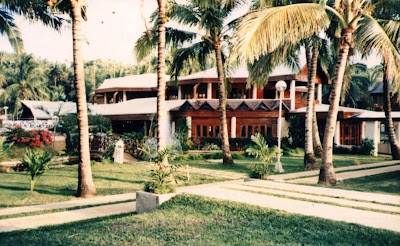Grace’s officemate Ms. Arachel “Chel” C. Borja was leaving for Hong Kong with her kids to accompany her husband who was to attend a convention and Grace and I decided to join them. We all left Manila for Hong Kong on 6:30 AM flight, arriving at Kai Tak International Airport by 8:10 AM.
This was to be our last entry into Hong Kong via this international airport. Landings at this airport were dramatic to experience and technically demanding for pilots. A little over a year later, on July 6, 1998, Kai Tak was closed and replaced by the new Hong Kong International Airport at Chek Lap Kok, 30 kms. to the west. There were plans for the site of Kai Tak to be used for housing development.
From the airport, we all took a bus to the city proper and checked out our accommodations at Payless Pension along Nathan Rd.. Grace and I found it quite rundown and decide not to take it.
We all had lunch at a MacDonald’s outlet then dropped off Chel and her family at the Hyatt Regency Hotel. We then decided to check in at one of the BP International Hotel’s 529 guest rooms.
Check out “Hotel and Inn Review: B P International Hotel“
B P International Hotel: No. 8 Austin Road, Tsim Sha Tsui, Kowloon, Hong Kong. Tel: (852) 2376 1111. Fax: (852) 2376 1333. E-mail: enquiry@bpih.com.hk. Website: www@bpih.com.hk.





















.jpg)
.jpg)








